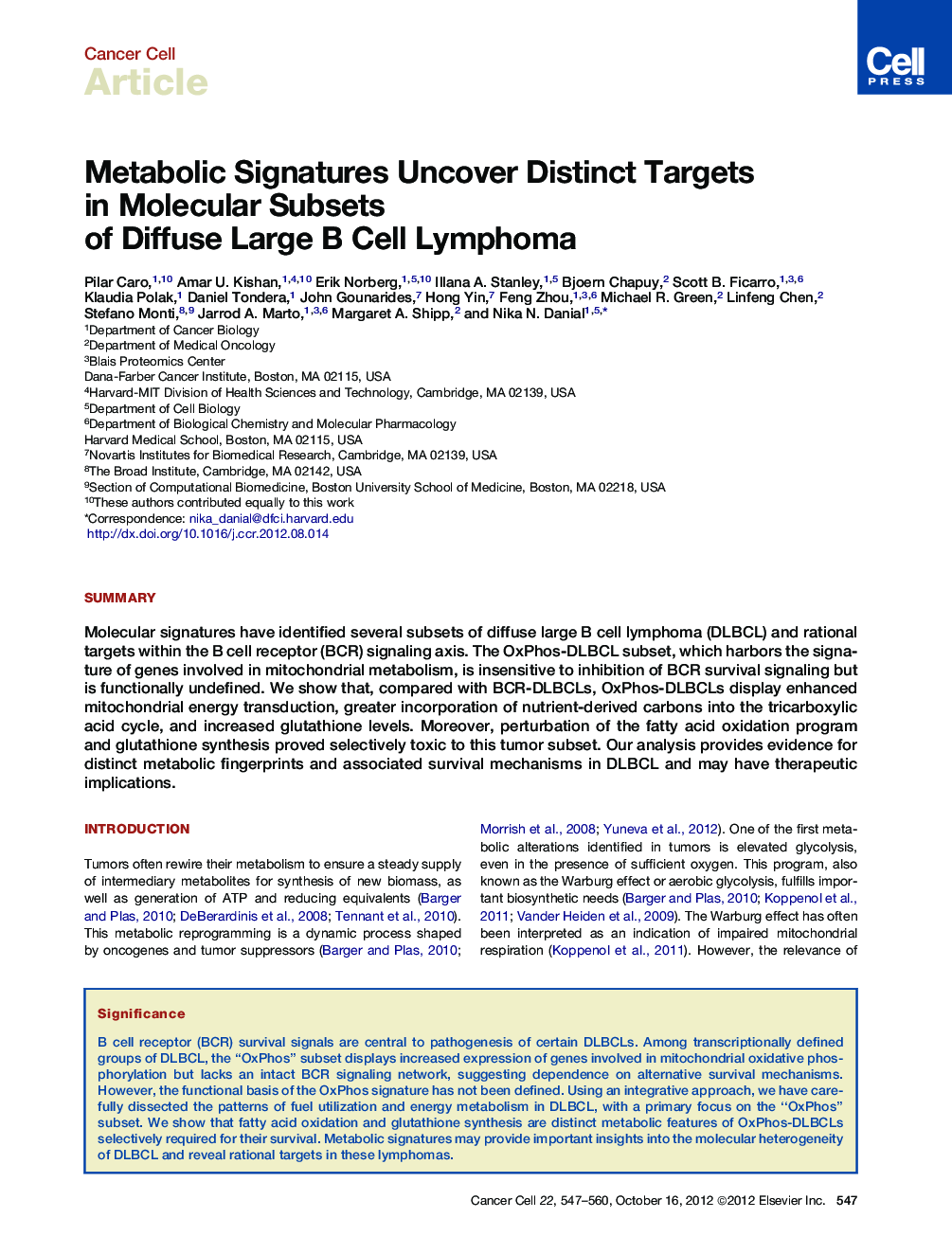| Article ID | Journal | Published Year | Pages | File Type |
|---|---|---|---|---|
| 2107115 | Cancer Cell | 2012 | 14 Pages |
SummaryMolecular signatures have identified several subsets of diffuse large B cell lymphoma (DLBCL) and rational targets within the B cell receptor (BCR) signaling axis. The OxPhos-DLBCL subset, which harbors the signature of genes involved in mitochondrial metabolism, is insensitive to inhibition of BCR survival signaling but is functionally undefined. We show that, compared with BCR-DLBCLs, OxPhos-DLBCLs display enhanced mitochondrial energy transduction, greater incorporation of nutrient-derived carbons into the tricarboxylic acid cycle, and increased glutathione levels. Moreover, perturbation of the fatty acid oxidation program and glutathione synthesis proved selectively toxic to this tumor subset. Our analysis provides evidence for distinct metabolic fingerprints and associated survival mechanisms in DLBCL and may have therapeutic implications.
► Glucose and fatty acids are differentially utilized in molecular subsets of DLBCL ► Mitochondria are predominant in the metabolic signature of BCR-independent DLBCLs ► Fatty acid oxidation and glutathione synthesis are relevant to OxPhos-DLBCL survival ► Fuel utilization pathways define additional levels of heterogeneity in DLBCL
